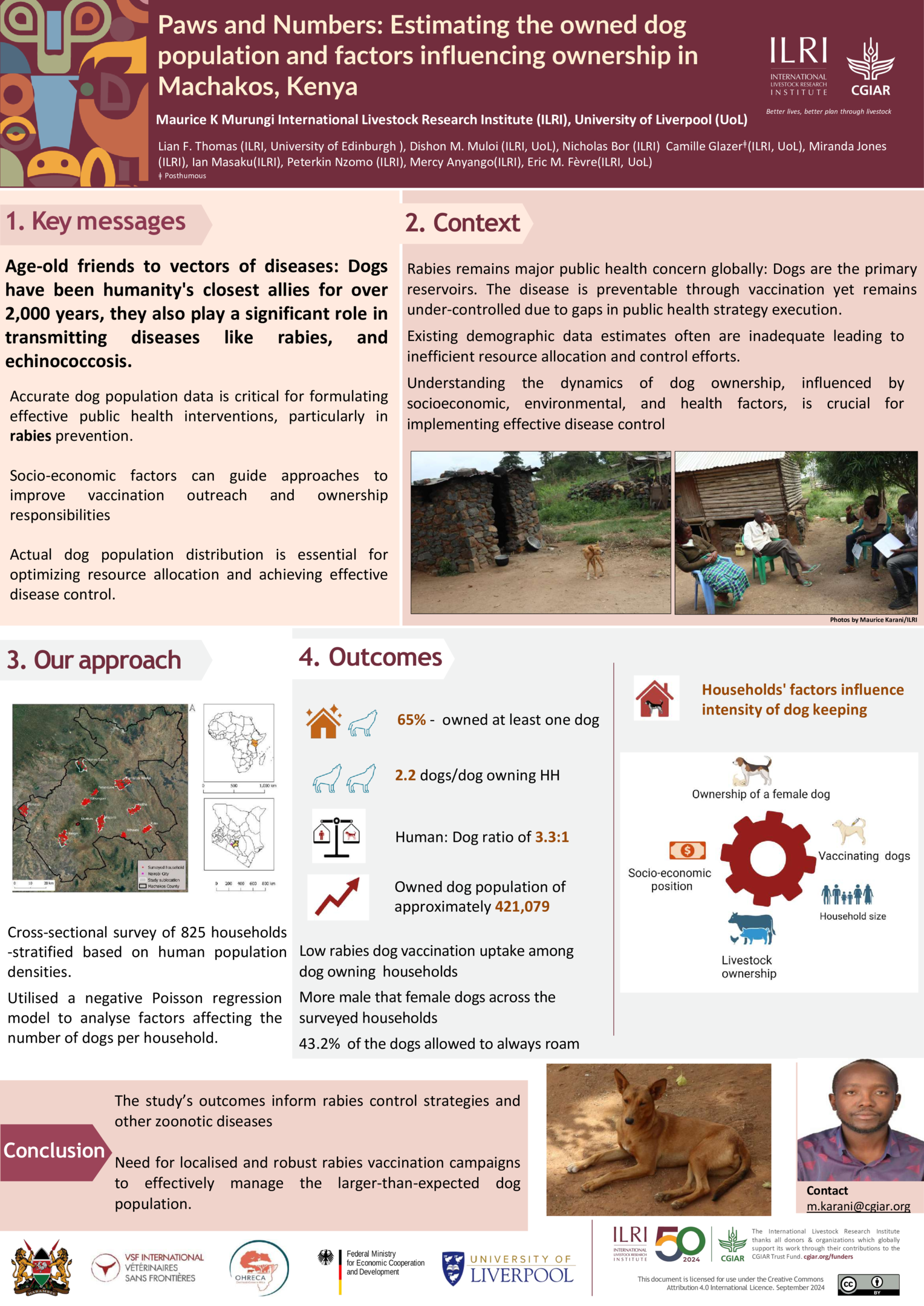
Description
Rabies remains a critical zoonotic disease with a high prevalence in Asia and Africa, where domestic dogs are the primary reservoir. Lack of up-to-date knowledge on dog population demography hampers the planning, execution and monitoring of effective control programmes.
We undertook a cross-sectional household survey of randomly selected households distributed across a gradient of human population density within a single county of Kenya. We extrapolated the dog population based on the human population density at every 10th percentile. Using a Poisson multivariable negative binomial regression model, we examined factors influencing the number of dogs per household.
The findings revealed a human: dog ratio of 3.3:1 (95% CI 3.27- 3.40), equating to an owned dog population of 421,079 dogs (95% CI: 408,702 - 424,950) in the county. Notably, 65% of households owned at least one dog, with an average of 2.45 dogs per dog-owning household. Multivariable analysis identified that larger, wealthier, and livestock-owning households were significantly associated with keeping more dogs OR = 1.05 95% (CI: 1.03 – 1.07), OR = 1.27 (95% CI: 1.12 - 1.43) and OR = 1.7, 95% (CI: 1.41 - 2.06) respectively. The presence of female dogs OR 3.06 (95% CI: 2.68 - 3.49) vaccinated dogs OR = 1.65, (95% CI: 1.44 - 1.87) in a household was significantly associated with a higher number of dogs owned.
These findings suggest that actual human-dog ratios may surpass current estimates in sub-Saharan Africa may be surpassed. In urban areas, the ratio is 21.2 (12.5–37.1), while in rural areas it's 7.4 (5.7–9.7) therefore having substantial logistical and financial implications for effective control and highlighting the necessity of robust local population estimates for rabies management.
Comments
Add new comment